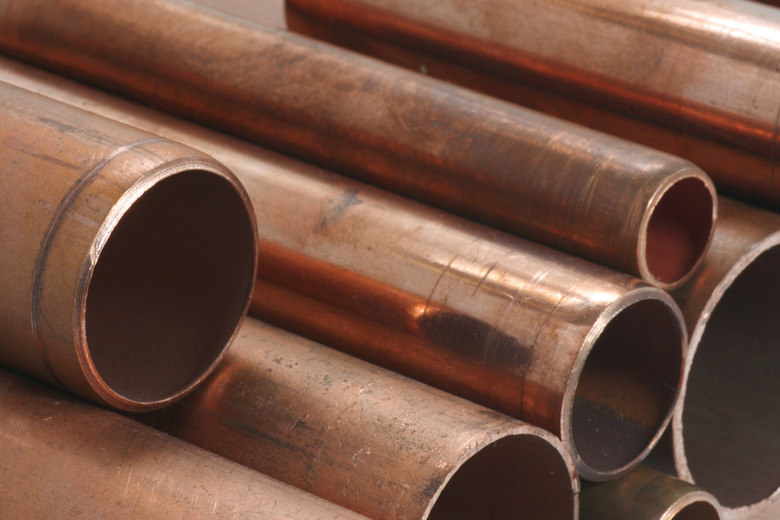Can Copper Pipe Be Buried?
Copper piping has proven to be long-lasting in the installation of both hot and cold water supply lines. Generally installed in 1/2- or 3/4-inch diameters, the pipe usually comes in 8- or 12-foot lengths. It is possible to bury copper pipes underground, but you must take certain precautions.
Tip
Copper pipe can be buried, but certain measures should be taken to help protect it from accelerated corrosion.
Use Type K Copper Pipe
Use Type K Copper Pipe
Three types of rigid copper pipes are available: Type M has thin walls, and Type L has medium walls usually used for general household installation. Type K has the thickest walls. For underground installations, use Type K copper pipe. But consult your local city building construction department prior to installation; it will always have the last say regarding local code requirements.
Homogenous Backfill Is Best
Homogenous Backfill Is Best
Install copper pipe in a trench at least 16 inches deep (refer to local code specifications). The copper pipe is best surrounded by homogenous backfill. Don't throw any construction debris of any kind into the trench to use as filler, as decomposing wood and other construction materials can increase the acidic soil level, which over time will eat into the copper pipe.
Don't Lay Pipe on Undisturbed Soil
Don't Lay Pipe on Undisturbed Soil
Do not lay the copper directly on top of undisturbed compacted soil, as this soil allows an oxygen differential cell to slowly develop on the bottom side of the copper pipe. The less-compacted landfill soil on the sides of and above the copper pipe has less oxygenated soil, which can lead to accelerated pipe corrosion.
Possible Backfill Alternatives
Possible Backfill Alternatives
Stop the possibility of accelerated pipe corrosion by applying a 4- to 6-inch layer of landfill in the bottom of the trench prior to the installation of the copper pipe. Then fill around the installed pipeline with the homogenous backfill. However, you can use alternative backfill materials, including limestone sand, washed sand, limestone chips, pea gravel, or small smooth river stone.
Sealing Copper Pipes
Sealing Copper Pipes
While copper piping stands up to corrosion well, the conditions of the ground where it is placed could mean it's best that you sleeve the pipes. Adding a seal or sleeve acts as an extra layer of protection once the pipes are out of sight underground. Copper is durable, and the seal or sleeve extends its life should it come into contact with salt, fertilizer, or other chemicals that make their way into the ground. When installing a sleeve, it's critical that a water-tight seal is created. Without that, you are inviting water to come into contact with pipes which accelerates corrosion.
